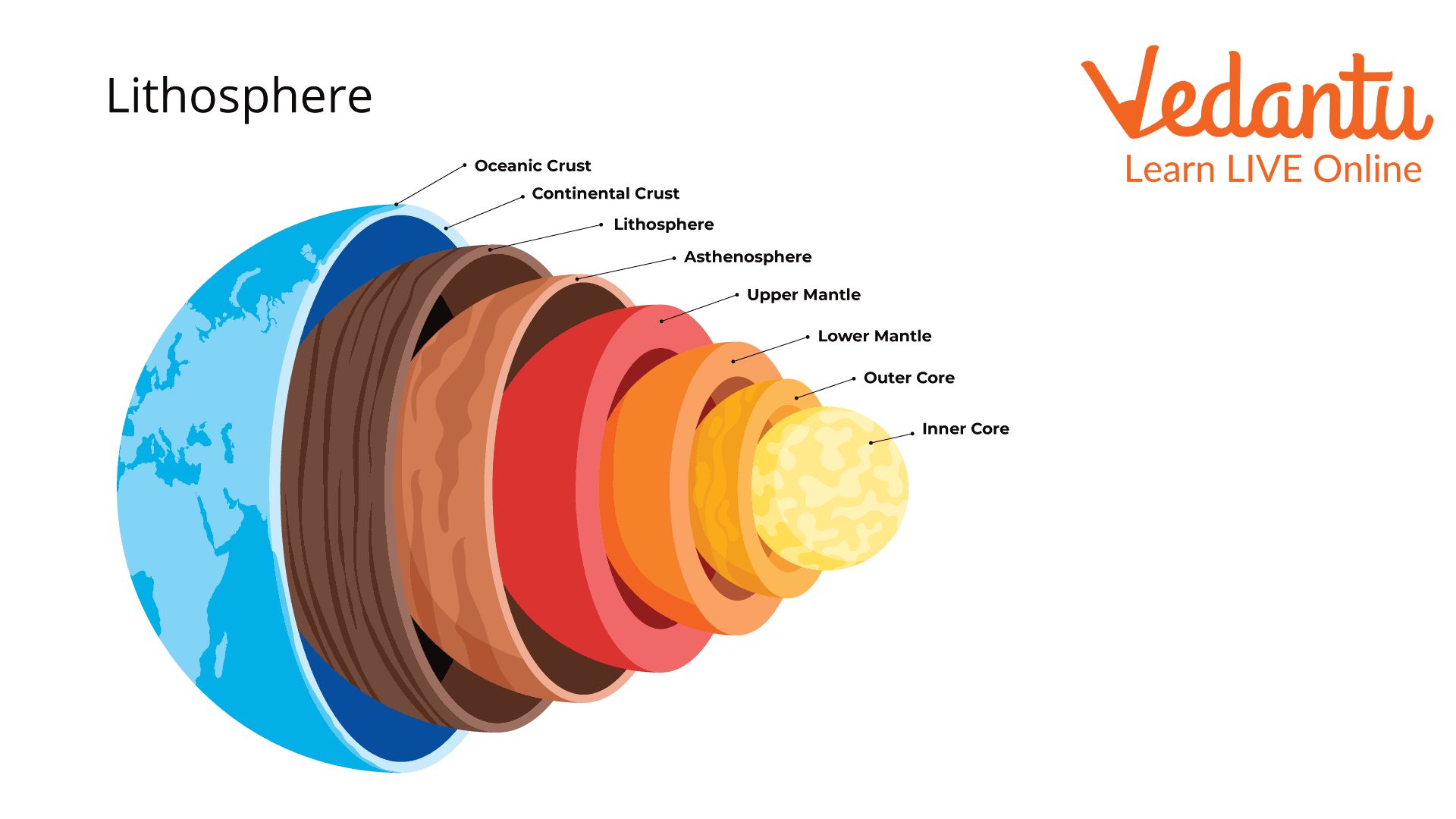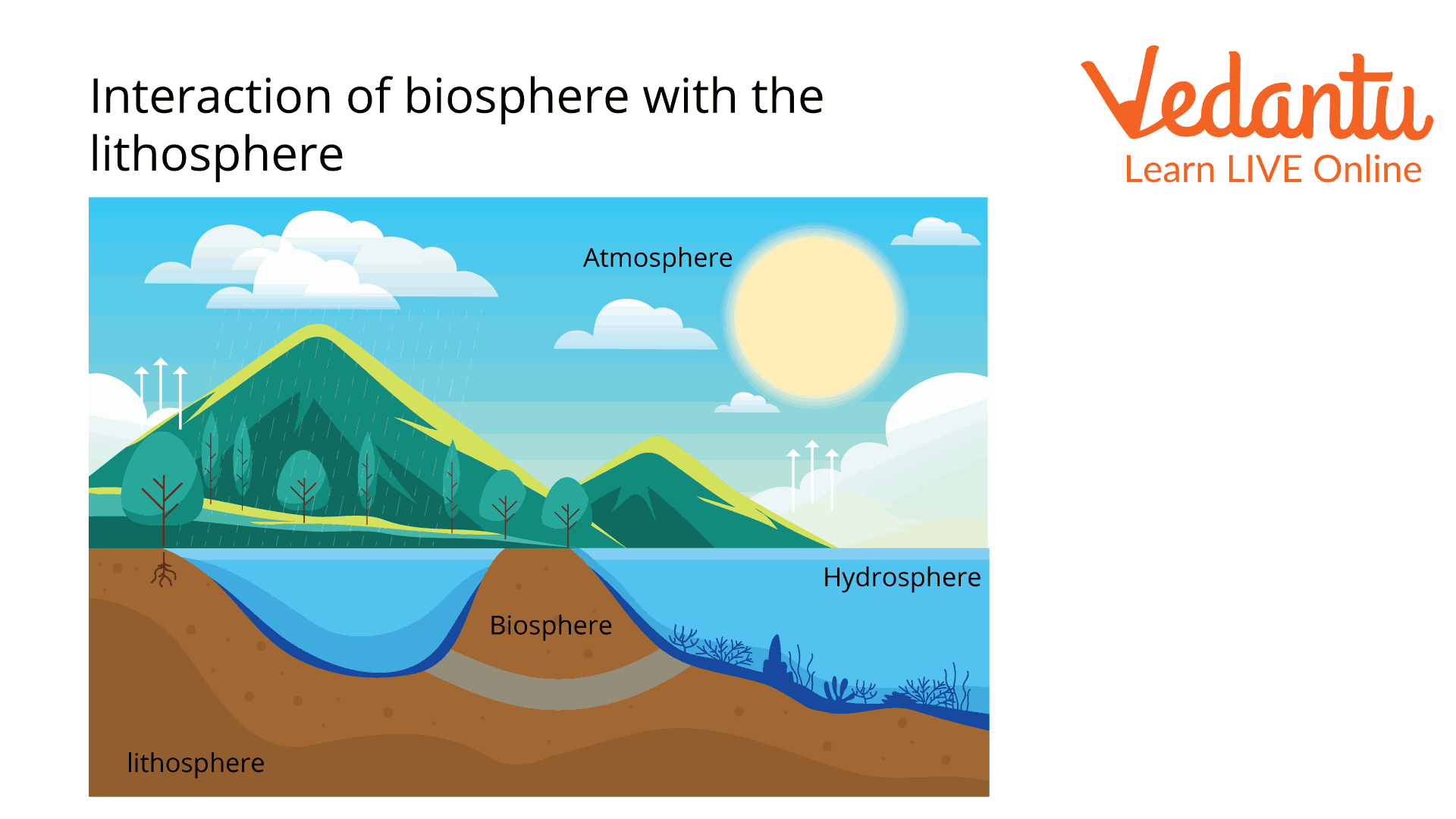




Plants Growing in the Lithosphere
The planet is divided into four realms. The lithosphere is one of the four realms. The origin of the prefix “Litho” stands for stone or marble in Greek. The lithosphere includes a solid and rigid vertical layer of the earth. Let us learn about the layers of the lithosphere and plants growing in the lithosphere.
Lithosphere Explained for Kids

Lithosphere
A simple Lithosphere definition for kids is, “Lithosphere is a solid, rocky part of the earth." This hard, rocky part consists of the crust and the upper mantle. Therefore, this realm can be considered the shell of the earth. The realm above the lithosphere is the atmosphere, and the realm below the lithosphere is the asthenosphere. The asthenosphere is a hotter and deeper part of the upper mantle that can flow.
There are Two Types of Lithosphere:
Oceanic Lithosphere:
The part of the lithosphere that lies under the ocean is called the oceanic lithosphere. Therefore, the floor of the sea also comes under the lithosphere.
Continental Lithosphere:
The part of the lithosphere which constitutes the continent we live in is called the continental lithosphere. The continental lithosphere is related to the mountains, plains, valleys, soil, sand, and rocks. The tectonic plates that make up the lithosphere move relative to one another.
Interaction of the Lithosphere with Plants

Interaction of the Biosphere with the Lithosphere
Plants belong to the biosphere realm. The biosphere realm is the realm that involves everything that has life. The prefix of the word "biosphere,” i.e., "bio,” means life. Therefore, plants are also a part of the biosphere. Although scientists have divided the earth into realms or spheres, they all exist together. Hence, the spheres interact, and a relationship is established between them.
The plants that once existed on earth eventually die and then decompose into the soil. The decomposed matter passes into the lithosphere from the biosphere. As time passes, they become a part of the lithosphere as fossil fuels.
You may now think this is the only relationship that plants and the lithosphere share, but no! You are wrong. Plants and trees also depend on the lithosphere. Plants use the nutrients from the dead and decomposed organic matter in the soil to thrive. Apart from this, plants and trees also help hold moisture in the soil, preventing the soil from flowing away easily due to erosion.
All of the above things were easy to understand, but do you know there is another superhero from the lithosphere that benefits the plants and the entire biosphere? That superhero is a volcano. Volcanoes may seem very dangerous, which they are, but they release a lot of nitrogen gas along with lava when they erupt. Nitrogen gas is an essential factor that enables life on earth to exist. This is how the lithosphere is related to plants.
Conclusion
We have understood the lithosphere, the types of the lithosphere, the components of the lithosphere, and the relationship between the two spheres, the lithosphere and the biosphere.
FAQs on Lithosphere’s Plants
1. What is the lithosphere?
The lithosphere is the solid, rocky outer layer of the Earth. It includes the ground we walk on, mountains, plains, and even the land beneath the oceans. It is essentially the Earth's crust and the upper part of the mantle, providing the surface where plants and animals live.
2. What kinds of plants grow on the lithosphere?
The lithosphere supports almost all land plants. This includes everything from giant trees in forests, colourful flowers in gardens, grass in fields, to hardy cacti in deserts. The specific type of plant that grows depends on the soil, climate, and landform of that part of the lithosphere.
3. Why is the lithosphere so important for plants?
The lithosphere is vital for plants for several key reasons:
It provides soil, which anchors the roots of plants and holds them firmly in place.
The soil contains essential nutrients and minerals that plants absorb through their roots to grow strong and healthy.
It holds rainwater that plants need to survive.
It offers a stable surface where plants can get the sunlight needed for photosynthesis.
4. How does soil, a key part of the lithosphere, help plants grow?
Soil is much more than just dirt; it's a crucial component of the lithosphere for plant survival. It acts like a pantry, storing water and nutrients. Plant roots grow deep into the soil to absorb these essential elements. Furthermore, soil has tiny air pockets that provide oxygen directly to the roots, helping the plant to breathe and thrive.
5. What are some examples of the lithosphere we can see around us?
You can see examples of the lithosphere everywhere on land. The towering Himalayan mountains, the vast Northern Plains of India, the rocky Deccan Plateau, and the sandy beaches along the coast are all parts of the Earth's lithosphere. Every piece of solid ground you stand on is an example.
6. What is the main difference between the lithosphere and the hydrosphere for plant life?
The primary difference is the environment they provide for plants. The lithosphere is the solid land that supports terrestrial (land-based) plants like mango trees and roses by providing soil for anchorage and nutrients. In contrast, the hydrosphere, which includes all water on Earth, supports aquatic plants like the lotus and water lily, which are specially adapted to live in or on water.
7. How can human activities harm the lithosphere and the plants that live on it?
Human activities can cause significant harm to the lithosphere. For instance, cutting down too many trees (deforestation) leads to soil erosion, where the fertile topsoil is washed away, making it difficult for new plants to grow. Additionally, pollution from factories and the overuse of chemical fertilisers can poison the soil, damaging the health of both the lithosphere and the plants.
8. What would happen to land plants if the lithosphere did not exist?
If the lithosphere did not exist, there would be no solid ground or soil. Consequently, land plants as we know them could not survive because they would have no place to anchor their roots and no source from which to draw essential nutrients. All life on Earth would be drastically different, likely existing only in the oceans. The lithosphere is the fundamental foundation for all terrestrial ecosystems.









